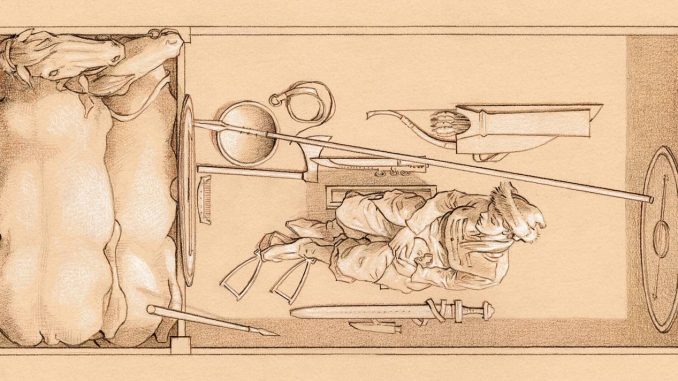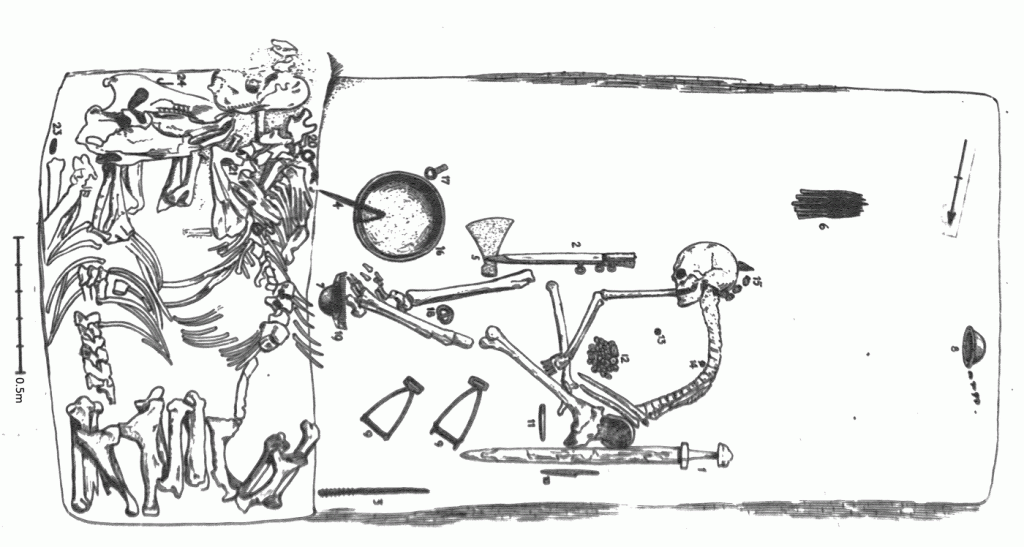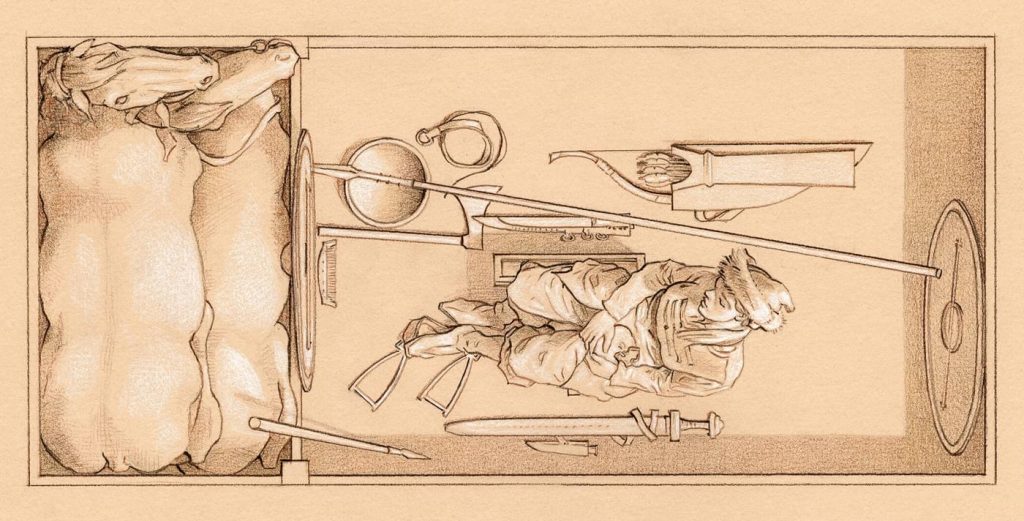
A current paper in Antiquity reinforces and confirms that the Birka warrior grave identified in 2017 as a female Viking is, in fact, female.
In 1878, a burial was excavated on Birka Island near Stockholm, Sweeden, that was immediately assumed to be a high-status warrior. And male.
The assumptions surrounding this “Birka warrior” burial continued until 2017 when it was revealed that DNA evidence showed the individual to be female.
This revelation brought much controversy and debate. Published in the American Journal of Physical Anthropology, the authors titled the paper, “A female Viking warrior confirmed by genomics” (Hedenstierna-Jonson et al 2017). What might have been considered solid data by many was suddenly thrown into question by those that rejected the notion that the individual could be female.

This was an individual buried in a wooden chamber with two horses, one of which was bridled for use. In addition, the body was surrounded with elite weaponry: an axe, a sword, armor-piercing arrows, lances, shields, and a knife. And in this person’s lap was a bag of gaming pieces and a gameboard nearby.

Of the 1100 or so graves discovered on this small island, only 75 had one or more offensive weapons. And this grave had a full compliment. In fact, it was one of the 20 richest graves on the island, perhaps the most significant of them all given the grave-goods, extent of the burial chamber, and garments worn by the warrior, which were adorned with silver tassels.
For well over 100 years, the assumption was that this was a warrior of some regard–perhaps a leader.
Then came the 2017 revelation of the skeleton’s biological sex.
The authors received a significant amount of attention with the release of that paper, a sizeable portion of which criticized the conclusion. Some question was raised whether or not the authors had analyzed the correct skeleton, suggesting that there might have been an additional individual in the grave. This was a way of saying, “okay, we understand that DNA tests are good at identifying a pair of X chromosomes. Since the individual is obviously male, there must be another skeleton in the burial that was tested.”
In the new paper, released today in Antiquity, the authors (Price, Hedensteirna-Jonson, et al 2019) include a more extensive set of supplementary material for review that details and counters the arguments from 2017 about analyzing the correct skeleton.
Importantly, the authors make no assumption about the individual’s gender. This person may have identified as male. They only state the fact that body interred had a pair of X chromosomes and no Y. And that it was interred in a way that has been interpreted for over 100 years as “a high-status warrior.”
Logically, the sex of the body should not change this interpretation. If we’re willing to say that an individual adorned as a warrior, buried with such grave-goods, and clothing might not be a warrior because the skeleton is biologically female, then we must equally be ready to say the same for a skeleton with a Y chromosome.
And it’s true. The individual might not be a warrior. But that would also be a possibility if the skeleton were biologically male.
Further Reading
Price, Neil; Charlotte Hedenstierna-Jonson; et al (2019) Viking warrior women? Reassessing Birka chamber grave Bj.581. Antiquity, Volume 93, Issue 367, pp. 181-198.
Hedenstierna-Jonson, C.; A. Kjellström, et al (2017). A female Viking warrior confirmed by genomics. American Journal of Physical Anthropology 164: 853–60.
Leave a Reply
You must be logged in to post a comment.